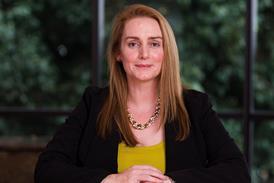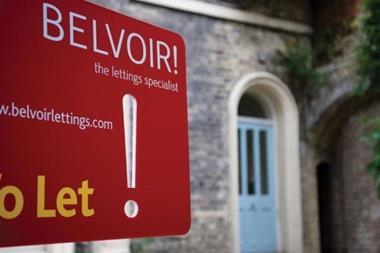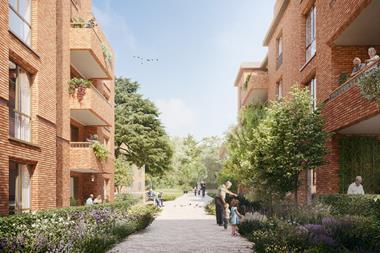In this all-female PropCast episode, three of the industry’s big hitters discussed the wide-ranging challenges faced by the real estate sector in overcoming a lack of gender, ethnic and social diversity.

Listen to this Podcast on the player below, or via SoundCloud, Spotify or Apple:
Liz Peace CBE - Property Advisor and Founder, Real Estate Balance
Professor Sadie Morgan OBE - Founding Director, dRMM
Emma Cariaga - Executive Committee, British Land
Former BPF boss and board advisor Liz Peace CBE, architect and founder of drMM Sadie Morgan OBE, and British Land executive director Emma Cariaga told Blackstock Consulting’s Anna Beketov that the sector can become more inclusive without being patronising.
While the industry has made huge strides over the last 20 years, says Liz Peace, who founded diversity campaigning organisation Real Estate Balance, it still faces a big challenge. In terms of gender diversity, while there are more women than ever in the property industry, the numbers dwindle the higher up the board you go.
Peace says that while firms are rightly prioritising diversity and inclusion, social mobility remains a critical challenge.
The planning profession, according to British Land’s Emma Cariaga, is better than some when it comes to diversity, but while local authorities are leading the way in terms of balance, private planning practices are still very much dominated by certain groups.
An imbalanced workforce, according to Sadie Morgan, will of course impact the way that buildings are designed.
“If you want inclusive design, you have to start with the brief, and you have to start right at the beginning and communicate with those who will be affected by your development,” she says. “We need to find better ways of making the method rather than just the outcome inclusive, and that means not talking in architecture speak, and making things much more accessible in all stages of the process, otherwise you will inevitably leave people out.”
On whether building design can exclude certain parties, or even be sexist, Morgan agrees that buildings can certainly be exclusionary. Thoughtful design not only considers whether a user is able-bodied but all areas that can potentially discriminate. “It’s all about the who and how you use space.” First and foremost, “we have to think about the ways in which we encourage diversity of thought.”
After the murder of Sarah Everard in Clapham and the outcry that followed, safety in public spaces has become a topical subject and something that Cariaga believes is imperative to think about when planning towns and cities. “There are obvious interventions that can be made in terms of overlooking and where you put different uses that create footfall and passive surveillance that make people, especially women, feel comfortable,” she says.
Peace adds that there is too much focus on individual buildings, but not enough about the areas that surround buildings. People are now starting to doubt the conventional wisdom of the past 20 years in light of the Covid experience. The pandemic has shown the challenges of not having access to facilities and open space, and the necessity for adaptable space.
London’s Southbank was referenced as an example of a place that can encourage better social values by being more welcoming. “Although it’s not a public building, it has a civic nature to it. Activation, easy wayfinding, and being able to permeate a space is incredibly important,” comments Cariaga.
The issue of ethnic diversity and social mobility has been a difficult one for the industry to crack. The solution may begin in education, says Peace.
Peace suggests we “get into communities early and show them that the built environment can be a massively diverse and inclusive place that’s open to everybody”.
This is where organisations like Real Estate Balance, ULI’s UrbanPlan (a classroom-based curriculum on land development), and Pathways to Property (which aims to raise awareness of the vast range of careers available within the industry and had Emma Cariaga on the board) come in. Such initiatives can both highlight the possibilities of a career in the built environment to people of all backgrounds, and also help challenge the people who really have the power to make the difference.
“There is a balance to be struck, that is not patronising, but is truly positive and inclusive,” summarises Morgan. “You won’t change the culture of an organisation unless you change the senior management,” Peace concludes, demonstrating the need for a holistic approach to encouraging diversity - starting at the bottom with education, right through to the CEOs at the very top.
“Building takes time and there will always be a lag”, Morgan says. “Things aren’t going to change immediately, but if we start to think more about the long term, we can learn what matters.” Inevitably some things will be less successful than others, but Morgan stresses the enormous importance of going back to a building five or ten years later and learning from those successes and failures.
You can also listen to this podcast via Apple Podcasts or Spotify.
Previous Podcasts:
#97: Council partnerships are where developers can create social value, says Bruntwood chief
Apple | Spotify | SoundCloud
#96: New strata of “super prime” offices could arise from a pandemic, says BlackRock
Apple | Spotify | SoundCloud
#95: Eden Project’s Tim Smit discusses sustainability ahead of ULI UK Conference
Apple | SoundCloud | Spotify
#94: Evolution away from long leases creates opportunities for investors, says Ian Marcus
#93: Landlords must share risk and promote flexibility to revive high streets, says Shaftesbury boss
Apple | Spotify | SoundCloud




























![Hilti[82]](https://d2bq2usf2vwncx.cloudfront.net/Pictures/380x253/9/0/6/1884906_hilti82_601642.jpg)

No comments yet